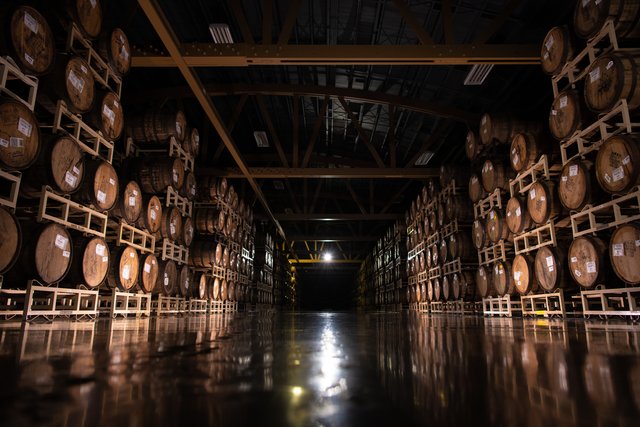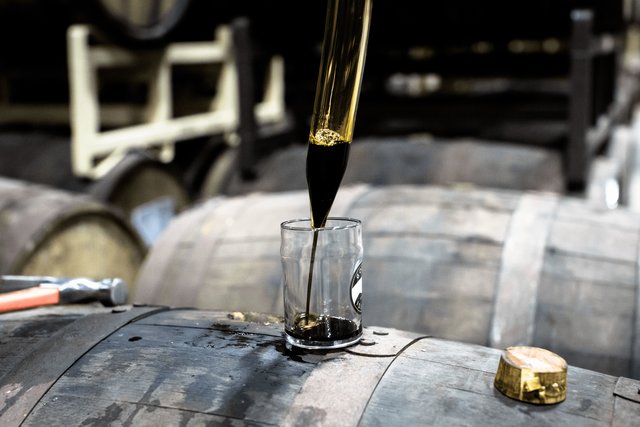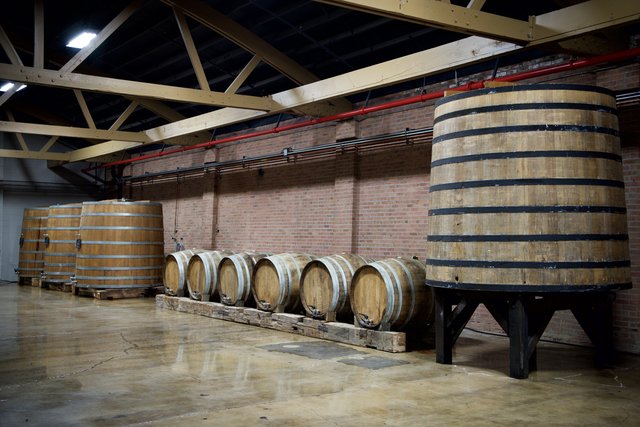A Great Idea
Greg has always had a lot of great ideas, and putting a big imperial stout in bourbon barrels sounded perfect, given that I liked bourbon and big stouts. No way could we ever have dreamed that his idea would have led us to where we are today with Bourbon County Stout. "It really is something. You can’t ignore it. Makes you truly savor the moment. That’s what makes it truly special.” John Hall, Goose Island Founder
In 1992, Goose Island crafted the first bourbon barrel-aged stout. For more than 3 decades now, Goose has paved the way for brewers in every corner of the world to experiment with barrel-aging.
Bourbon Barrels
Bourbon barrels are used to impart distinct characteristics from the residual spirit remaining in the barrel into a couple of our very special beer releases each year. Bourbon barrels start as 100% first use charred American White Oak.
The staves are formed from planks of oak that are open air cured before coming together to form a barrel held together by large steel rings. The inside of the barrel is charred, caramelizing the wood sugars, and securing the shape of the barrel.
Brewing Bourbon County Brand Stout
Bourbon County Stout is a beer designed for aging. Here at Goose Island our brewers use six different malts weighing a total of nearly 5,000 pounds in every brewhouse batch.
The boil for Bourbon County Stout lasts 3-4 hours to condense sugars.. Hops are added to every turn of Bourbon County Stout to balance the sweetness of the malt and add a layer of additional complexity. Chilled wort is then pumped into a fermentation tank. From there, with an abundance of available sugar, the yeast starts a rapid and rowdy fermentation.

Chicago’s Unique Climate
Once brewed, the base stout is pumped into bourbon barrels where it will reside for an average of 12 months to age in our non-climate controlled barrel house.
Situated on the coast of Lake Michigan, the nation’s largest freshwater lake, Chicago’s four seasons directly influence the aging process for Bourbon County Stout. During hot Chicago summers, the wood of the barrel expands, pulling the beer deep into the wood and starting the process of developing flavor from the residual bourbon and layers of oak. Cold winters cause the wood to contract, bringing the beer back into the barrel, pulling with it, all of those complex developed flavors.
Residency & Blending
The expansion and contraction of the wood results in the beer picking up distinct characteristics with remarkable nuance.

Char Layer – smoke, chocolate and roasted coffee
Absorption Layer – tobacco and leather
Bourbon Layer – coconut, caramel, vanilla and cherry
Raw Wood Layer – earthy and woody
The porous nature of the wood allows small, consistent amounts of oxygen to come into contact with the beer. This process of oxidation, gives off that iconic nutty almond flavor found in our finished stout. The wood then allows the liquid to evaporate from the barrel, further making the beer more concentrated, resulting in a richer, more decadent flavor. The term "Angel's Share" is used to describe the lost volume due to evaporation during the aging process. There is loss of volume due to absorption into the barrel as well which is referred to as the "Devil's Cut".
Once aging is complete, the blending process begins. Each year we blend various ages of barrels together to reach an average age of 12 months. Our brewers taste every single barrel that goes into the final blend for Bourbon County Stout.

Wine & Spirit Barrels
Beyond bourbon barrels, we use a variety of spirit and wine casks. Goose Island uses oak neutral wine casks for aging our classic Belgian Style Ale, “Sofie”.
In addition to that, our brewers at Goose Island are constantly innovating with various barrels across the wine and spirit industry. Exploring unique flavors from barrels that previously held tequila, rum, port, cognac and many more, these barrels allow us to continue to be at the forefront of barrel-aging.






